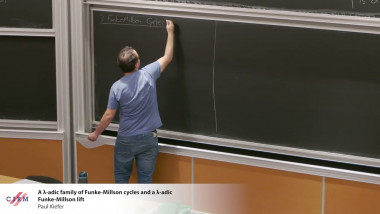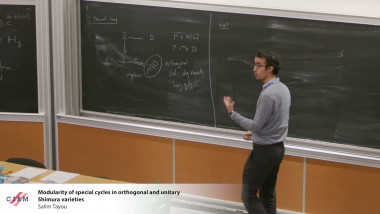
A $\lambda$-adic family of Funke-Millson cycles and a $\lambda$-adic Funke-Millson lift
De Paul Kiefer

Modularity of special cycles in orthogonal and unitary Shimura varieties
De Salim Tayou
Apparaît dans la collection : Additive Combinatorics / Combinatoire additive
T.C. Brown and A.R. Freedman proved that the set $\mathcal{P}_{2}$ of products of two primes contains no dense cluster; technically, $\mathcal{P}_{2}$ has a zero upper Banach density, defined as $\delta^{²}(\mathcal{P}_{2}) =\lim_{H\mapsto \infty} \limsup_{x\mapsto \infty} \frac{1}{H} Card \{n\in \mathcal{P}_{2}:x< n\leq x+H}$. Pramod Eyyunni, Sanoli Gun and I jointly studied the local behaviour of the product of two shifted primes $\mathcal{Q}_{2}=\{(q-1)(r-1):q,r \, primes}$. Assuming a classical conjecture of Dickson, we proved that $\delta^{²}(\mathcal{Q}_{2}) = 1/6$. Notice that we know no un-conditional proof that $\delta^{²}(\mathcal{Q}_{2})$ is positive. The application, which was indeed our motivation, concerns the study of the local behaviour of the set $\mathcal{V}$ of values of Euler’s totient function. Assuming Dickson’s conjecture, we prove that $\delta^{²}(\mathcal{V})\geq 1/4$. The converse inequality $\delta^{²}(\mathcal{V})\leq 1/4$ had been proved in the previous millenium by K. Ford, S. Konyagin and C. Pomerance.
